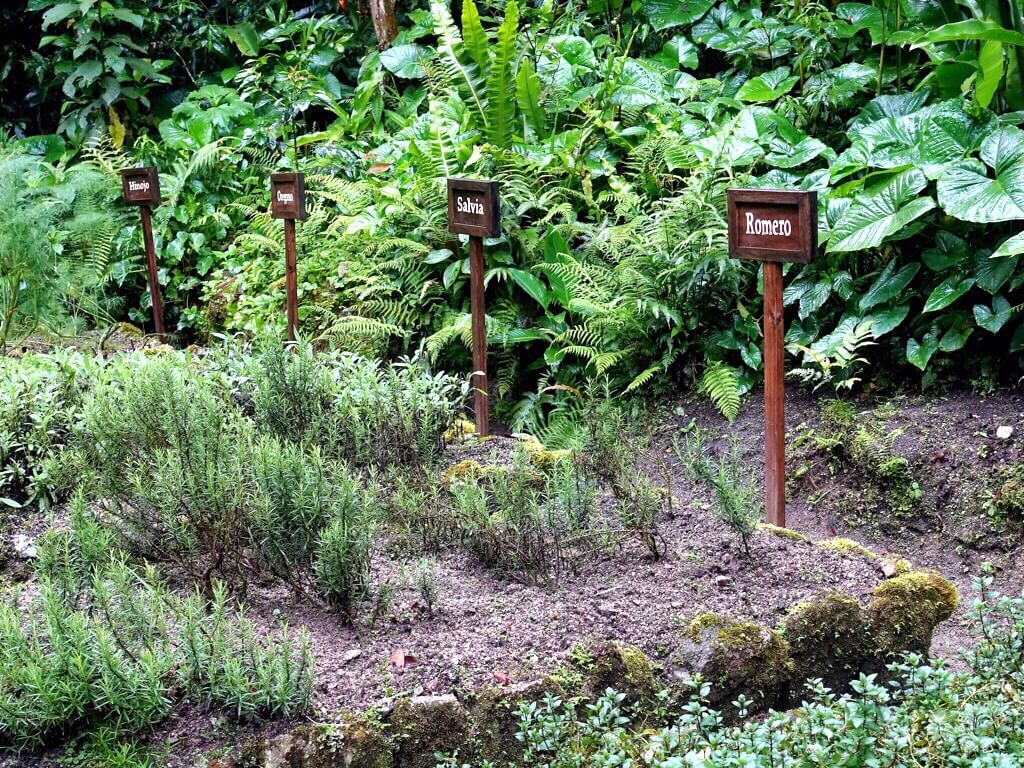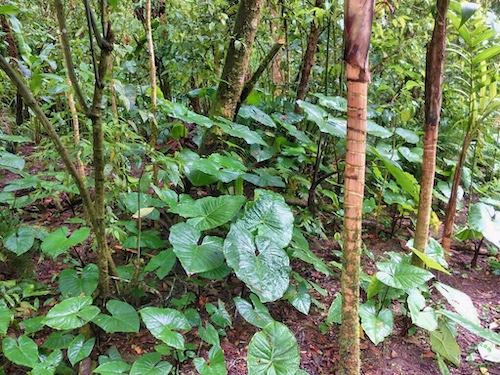
The Spanish took many products from the Americas and introduced them to the world where they had a huge impact. The history of the world, for example, would be very different had it not been for the Andean potato, which allowed populations to boom in many places. But for some reason, almost no Andean condiment made that transition, and yet they are still used today in the foods of Cuzco. In the Cuzco markets you can buy bunches of herbs called asnapa that are classic for Cuzco cuisine. The asnapa generally includes oregano, rue (a plant that is almost never used for food in Anglo North America), cilantro, yerba buena (“good herb” or a sweet mint that can often be a form of muña), parsley, muña, huacatay, and paiko. Although the asnapa contains some European imports: oregano, rue, cilantro, and parsley, and even these are not always so clearly foreign as in “oregano” and “yerba buena”, nevertheless the core flavors come straight from the Incas and before. I got to see some unusual herbs in Aguas Calietes and some plants used for food, like the Arrowleaf Elephant Ear that I thought I would share in this post.
Arrowleaf Elephant Ear
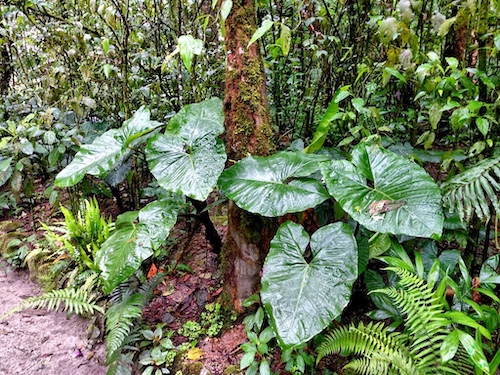
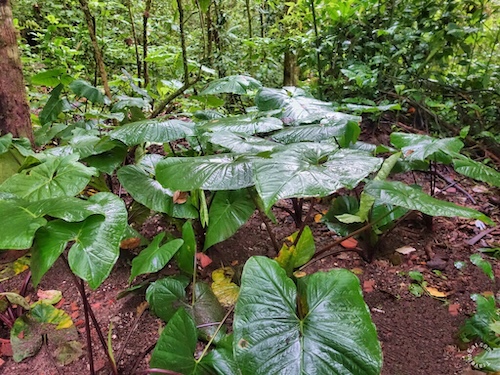
Xanthosoma sagittifolium, the arrowleaf elephant ear or arrowleaf elephant’s ear, is a species of tropical flowering plant in the genus Xanthosoma, which produces an edible, starchy corm. In Bolivia, it is called walusa, in Colombia bore, in Costa Rica tiquizque or macal, in Mexico mafafa, in Nicaragua quequisque, and in Panama otoe. In Brazil, the leaves are sold as taioba. The tuber (called nampi or malanga) is also used in the cuisine of these countries. The plant is often interplanted within reforestation areas to control weeds and provide shade during the early stages of growth. The leaves are really enormous in person, at least three feet long, and lend a grandiose green beauty to the forest.
Lemons and Limes
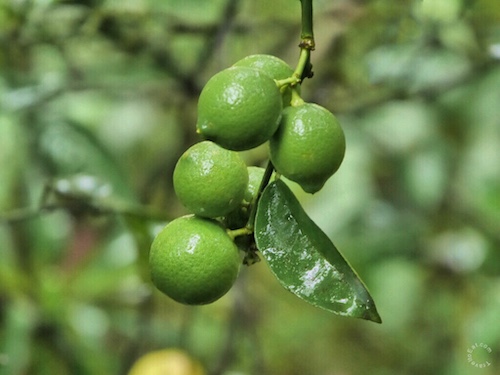
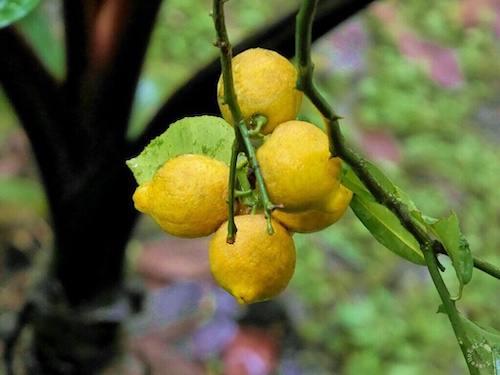
They grow lemons and limes on the grounds of the Inkaterra Machu Picchu Pueblo Hotel in Aguas Calientes. A lime (from Arabic and French lim) is a hybrid citrus fruit, which is typically round, lime green, 3–6 centimeters (1.2–2.4 in) in diameter, and containing acidic juice vesicles. There are several species of citrus trees whose fruits are called limes, including the Key lime (Citrus aurantifolia), Persian lime, kaffir lime, and desert lime. Limes were first grown on a large scale in southern Iraq and Persia, and the fruit was first grown commercially in what is today southern Iraq (Babylonia). Although the origin of the lemon is unknown, lemons are thought to have first grown in Assam (a region in northeast India), in northern Burma or China. A study of the genetic origin of the lemon reported it to be hybrid between bitter orange (sour orange) and citron. The first substantial cultivation of lemons in Europe began in Genoa in the middle of the 15th century. The lemon was later introduced to the Americas in 1493 when Christopher Columbus brought lemon seeds to Hispaniola on his voyages. Lemons and lemon juice were used aboard ships to prevent scurvy, a deficiency of vitamin C.
Herb Garden
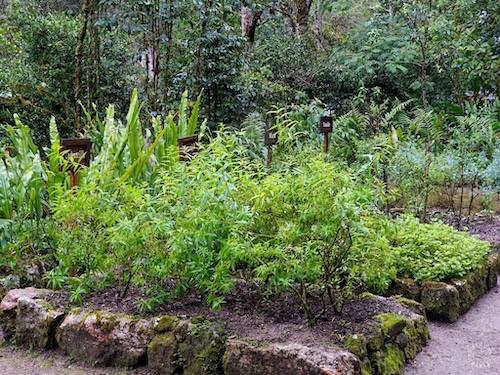
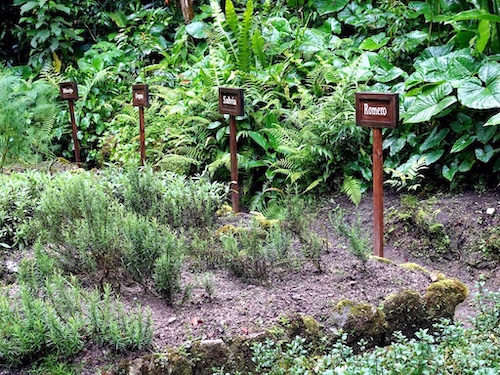
They had a little herb garden in front of the “tea” house, with raised planters, and I took pictures (of course) since I love to learn about new herbs and plants. The following photographs document what they were growing. I really don’t know if the herb garden was used in the kitchens but I can say the food at Inkaterra was exceptional.
Hierba Luisa
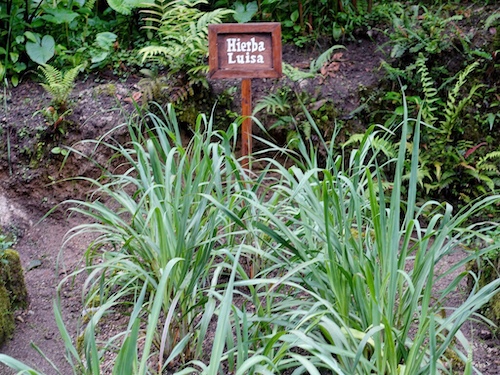
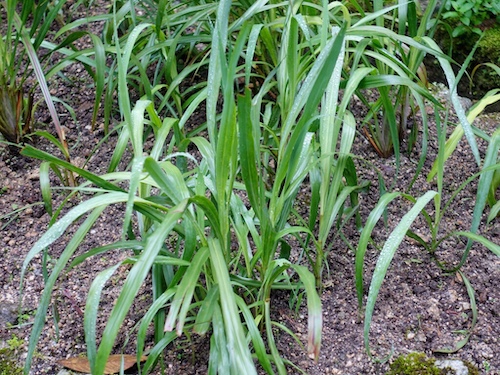
Hierba Luisa (Aloysia citrodora) is a species of flowering plant in the verbena family Verbenaceae, native to western South America. Common names include lemon verbena and lemon beebrush. It was brought to Europe by the Spanish and the Portuguese in the 17th century and cultivated for its oil. The genus is named for Maria Luisa of Parma (1751-1819), wife of King Charles IV of Spain. The sprays of tiny purple or white flowers appear in late spring or early summer, it was not in bloom at Christmas. Lemon verbena leaves are used to add a lemon flavor to fish and poultry dishes, vegetable marinades, salad dressings, jams, puddings, Greek yogurt and beverages. It also is used to make herbal teas, or added to standard tea in place of actual lemon (as is common with Moroccan tea). It can also be used to make a sorbet. Cymbopogon citratus, commonly known as lemon grass or oil grass, is a tropical plant from South Asia and Southeast Asia, which is confusingly also known as Hierba Luisa.
Cedroncillo
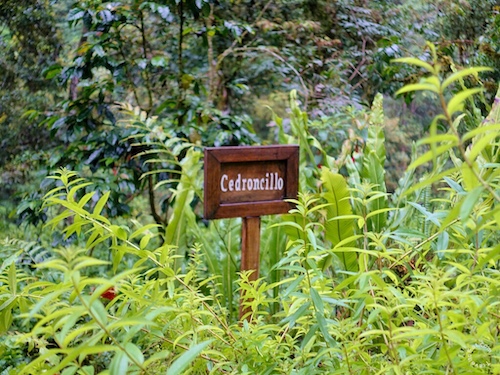
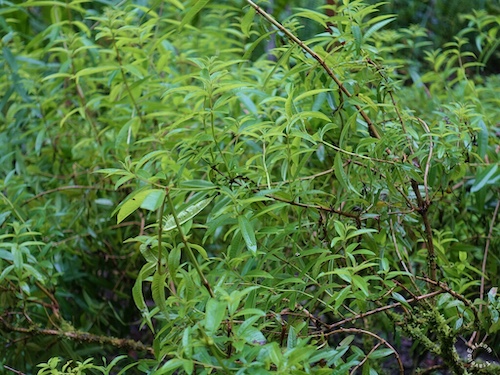
Cedroncillo (Aloysia herrerae), is yet another lemon flavored herb, also known as Cédron in Mexico and is a medicinal herb found in the Andes. It is very aromatic and sometimes used for incense. An oil extraction is highly valued in other countries, though in order to make the oil, you need a lot of plant material, which may be unsustainable. As a tea, it’s said to be a calming nervine and digestive aid. Smells amazing. Cedroncillo is well suited to tropical humid climate and is adapted to climates with very low temperatures. This herb has relaxing, adjuvant properties in relieving stress, cardiotonic tranquilizer, relieves and prevents symptoms caused by stress, this product helps to relax the body stressed either nervousness or the bustle of daily life. For the preparation of infusions both the leaves and the stem and flowers used. Not to be confused with the Kidron plant, essential oils as they have very different therefore also different medicinal effects.
Toronjil
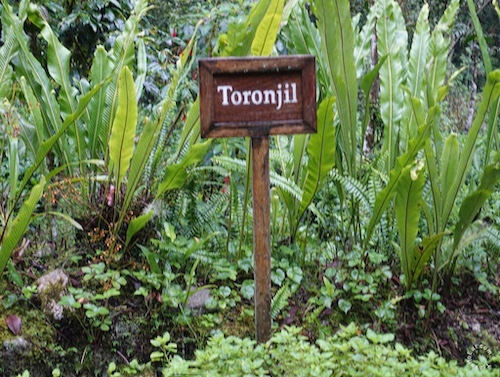
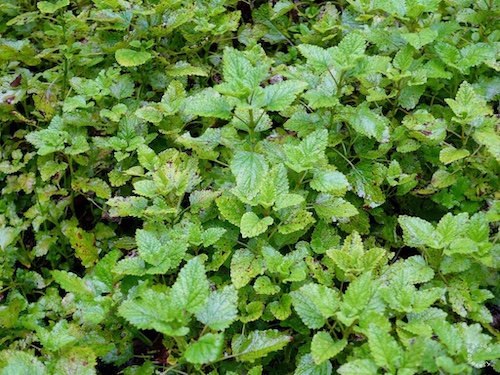
Toronjil (Melissa officinalis), known as lemon balm, balm, common balm, or balm mint, is a perennial herbaceous plant in the mint family Lamiaceae, native to south-central Europe, North Africa, the Mediterranean region, and Central Asia. It grows to 70–150 cm (28–59 in) tall. The leaves have a gentle lemon scent, related to mint. During summer, small white flowers full of nectar appear. It is not to be confused with bee balm (which is genus Monarda). The white flowers attract bees, hence the genus name Melissa (Greek for ‘honey bee’). Lemon balm also keeps the mosquitoes at bay as its leaves contain citronella compounds in large amounts. The citronella plant is popularly used in commercial mosquito repellants and there is up to 38% citronella content in some varieties of lemon balm. Aloysia citriodora Palau., Cymbopogon citratus (DC) Stapf. and Melissa officinalis L. are sold as lemongrass in the herbalist shops because of leaves of these species have a gentle lemon-scented essential oil, contains citral or citronellal. This similarity causes the use of plants for the same purposes.
Tomillo
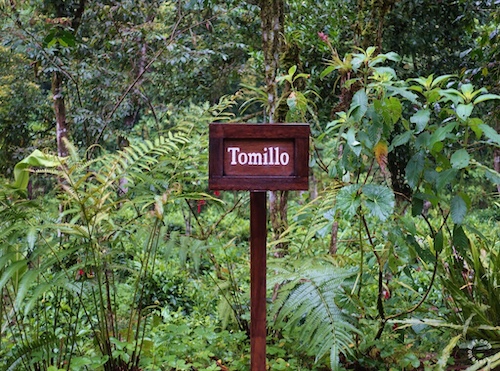
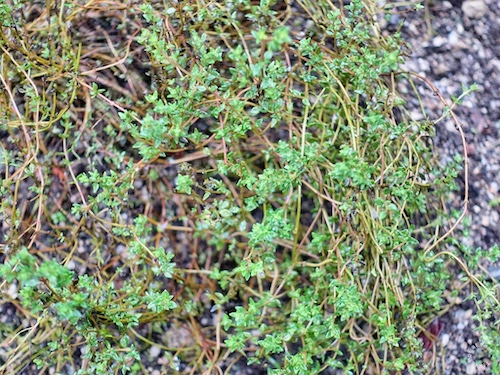
Going with the citrus theme is Tomillo (Thymus citriodorus). Thyme is an evergreen herb with culinary, medicinal and ornamental uses. The most common variety is Thymus vulgaris. Thyme is of the genus Thymus of the mint family (Lamiaceae), and a relative of the oregano genus Origanum. Tomillo (Thymus citriodorus) Lemon thyme or Citrus thyme is a lemon-scented evergreen mat-forming perennial. There has been a great deal of confusion over the plant’s correct name and origin. Recent DNA analysis suggests that it is not a hybrid or cross, but a distinct species as it was first described in 1811. As we know, thyme is a perennial plant, very aromatic with tiny leaves that blooms in spring and summer. It is likewise used as a medicinal plant as a culinary spice. Lemon thyme is mainly used as culinary herb, its dark green leaves provide a strong lemon scent, with more power just before flowering. All of the varieties of thyme are widely used in all kinds of recipes, stews, meat, fish, sauces and even salads, not forgetting that it is also an element often used for the decoration of dishes.
Menta
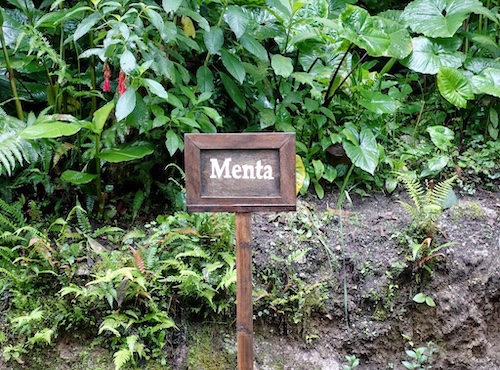
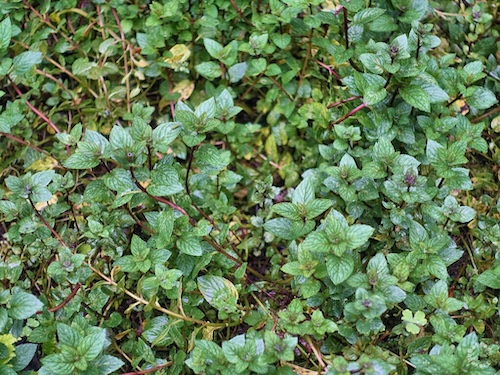
There are three chief species of mint in cultivation and general use: Spearmint (Mentha viridis or Mentha spicata L.), Peppermint (M. piperita), and Pennyroyal (M. pulegium), the first being the one ordinarily used for cooking. Hierba Buena, translated meaning the good herb refers to local species of mint, which vary from region to region in Peru. In Peru Hierba Buena is occasionally used as seasoning, but mostly for its medicinal properties. Hierba Buena teas are believed to help with digestive problems of all sorts including diarrhea, pains and inflammations. This particular mint is I believe Mentha spicata L. It has a rich minty smell that can move from herby to sharp or sweet. Frequently drunk in teas or smelled for its medicinal benefit of calming digestive problems or helping with altitude sickness, muña is also used as a condiment for food. However, there are at least two different plants that are called muña. And to further confound things, one variety of muña is also called oregano, since this word covers so many pungent herbs around the world that are unrelated to the origanum species of the Mediterranean. Both Clinopodium bolivianum, and Mintostachys (various species) are considered muña. For us who like to tie things down into nice botanical order, this can be confusing. This is not Tagetes minuta, also known as Peruvian black mint, which is a tall upright marigold plant from the genus Tagetes, with small flowers, native to the southern half of South America.
Muña
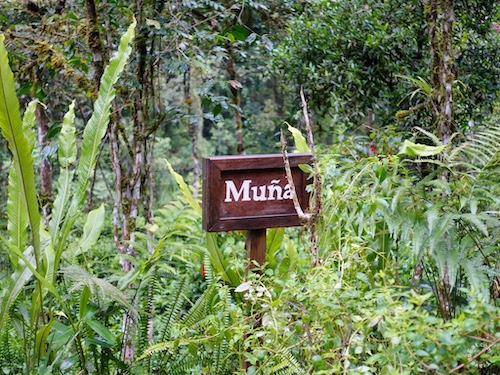
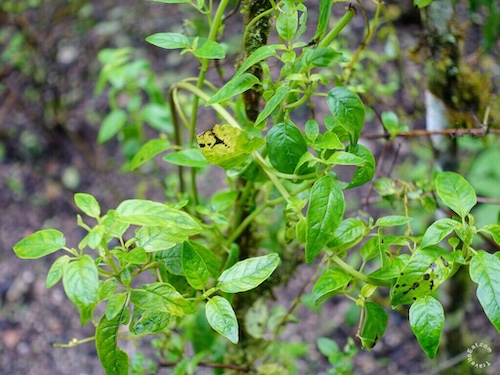
Muña (Minthostachys mollis) is a medicinal plant restricted to the South American Andes from Venezuela to Bolivia. It is the most variable and widely distributed species of the genus Minthostachys. It is also known by the names of tipo, tipollo, or poleo. In the indigenous medicine traditions of the Andes, the plant is made into tea and used medicinally as a carminative and aphrodisiac. One of the many plants that germinate in the Andean cold is the muña. It stands out because even in the sharp cold of the dry season it maintains its green color. It has a mint like aroma that enchants passersby who often grab a few leaves to sniff because of how the scent invigorates them and helps them continue their path. Muña, known in Latin as minthostachys mollis, grows throughout the highlands near Cuzco, Ayacocho and Puno. It can grow up to a meter high and has a bright green color and a delicious scent that is reminiscent of mint, which is a a distant relative.
Ruda
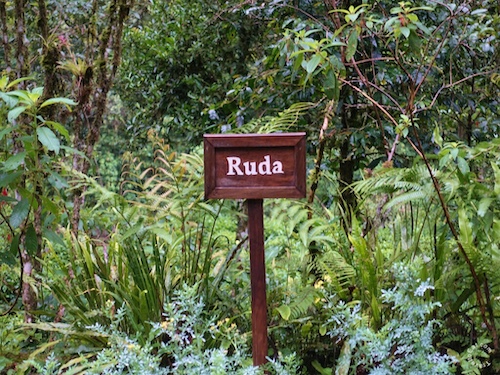
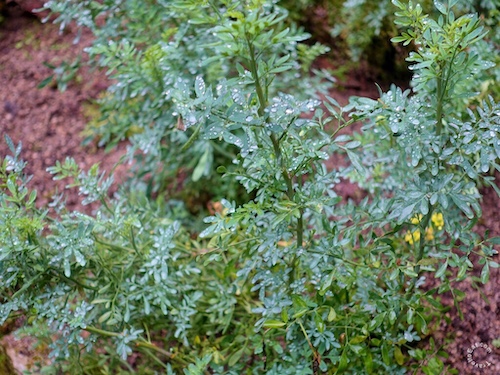
Ruda (Rue) is a small evergreen subshrub or semi woody perennial 2-3′ tall and almost as wide. The stems become woody near the base, but remain herbaceous nearer the tips. The 3-5″ long leaves are dissected pinnately into oblong or spoon shaped segments. They are somewhat fleshy and usually covered with a powdery bloom. Rue, known as the “Herb of Grace”, is a native of the Mediterranean region. The bitter taste of its leaves led to rue being associated with the verb rue “to regret”. Rue is well known for its symbolic meaning of regret and it has sometimes been called “herb-of-grace” in literary works. Some say the most potent Rue is from Peru. It has been said it is anti-spasmodic, stimulant, it is useful in hysterical affections, in coughs, colic, flatulence, macerated leaves used as compresses are very effective against pain of sciatica, rheumatism, against headache, against chronic bronchitis, bruises, inflammation, pain of gout, etc. Rue has been known and used for generations as the best protection against witchcraft, and spells. Ayahuasca is a hallucinogenic drink made from the stem of the ayahuasca vine, Banisteriopsis caapi. The ayahuasca drink is sometimes, but rarely, made from the ayahuasca vine alone; almost invariably other plants are added as in the case of rue. Peru is one of the few places to incorporate rue in its cuisine.
Hinojo
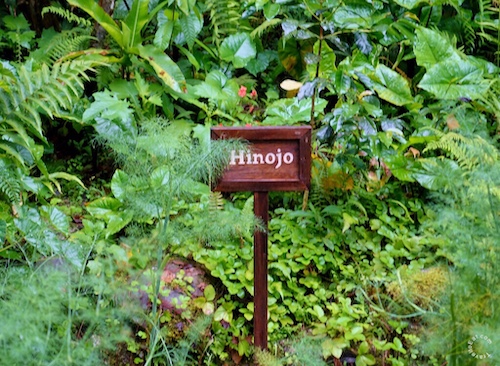
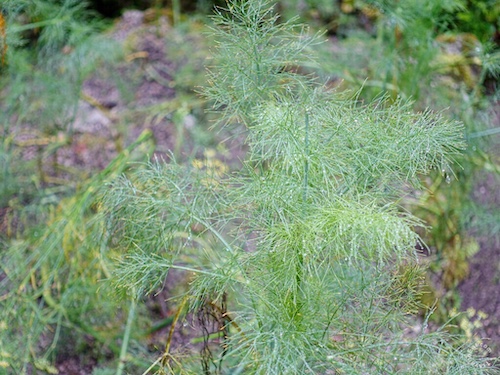
Hinjo or Fennel (Foeniculum vulgare) is a flowering plant species in the carrot family. It is a hardy, perennial herb with yellow flowers and feathery leaves. It is indigenous to the shores of the Mediterranean but has become widely naturalized in many parts of the world, especially on dry soils near the sea-coast and on riverbanks. Foeniculum vulgare, hinojo or fennel, is an Old World perennial growing up to one meter high and found in all parts of the valley. Fennel is the well known folk medicine of the region. The flowers and fresh leaves are herbs in used with other herbs in infusions to cure kidney inflammations, cramps, cough and nervous disorders. The custom of mixing herbs is belived to be derived from folk medicine in the Old World; the Incas regarded each plant individually as being a specific cure for a specific illness. The fruits of fennel said to be used as a purge.
Salvia
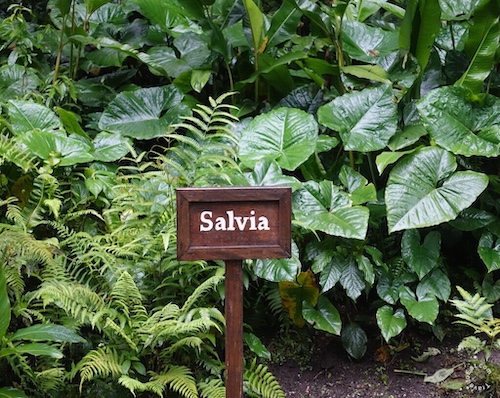
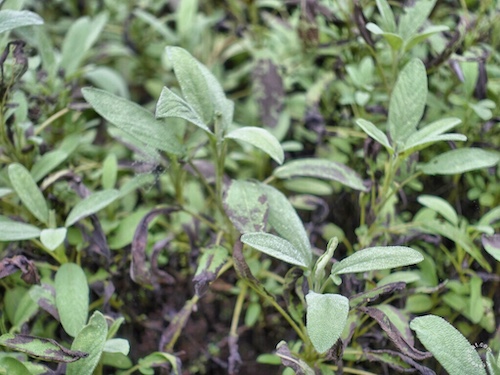
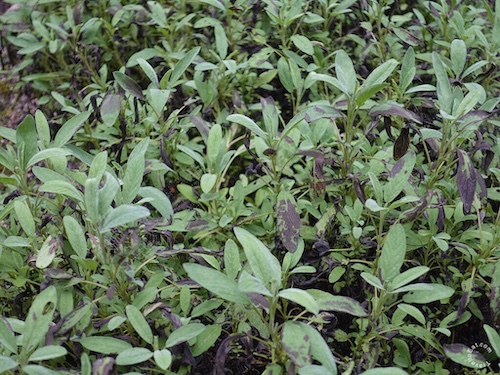
Salvia is the largest genus of plants in the mint family, Lamiaceae, with nearly 1000 species of shrubs, herbaceous perennials, and annuals. The genus is distributed throughout the Old World and the Americas, with three distinct regions of diversity: Central and South America (approx. 500 species); Central Asia and Mediterranean (250 species); Eastern Asia (90 species). Salvia discolor Is a perennial Salvia from Peru. Andean Silver-leaf Sage is the common name, referencing the Andes where it grows naturally and the silvery hue of the leaves. It grows high in the Andes, in vegetation almost free of trees. It has ovate densely white-woolly, entire mid green stems and leaves up to 2 inches long. It is most famous for long terminal racemes of very deep purple/black flowers from white woolly calyces which were not present at Christmas. It has a long history of medicinal and culinary use, and in modern times as an ornamental garden plant. The common name “sage” is also used for a number of related and unrelated species. Sage is for health, longevity, wisdom, esteem, wishes, happy home and safety for children. Sage’s Latin name comes from the word salvere which means to be healthy.
Romero

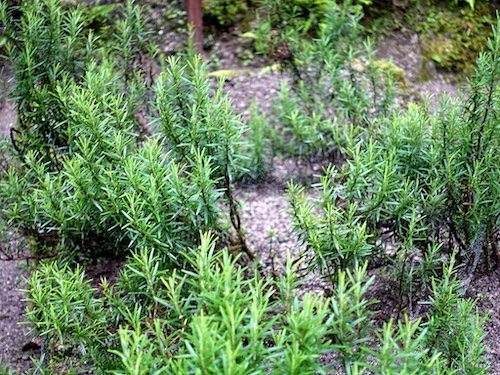
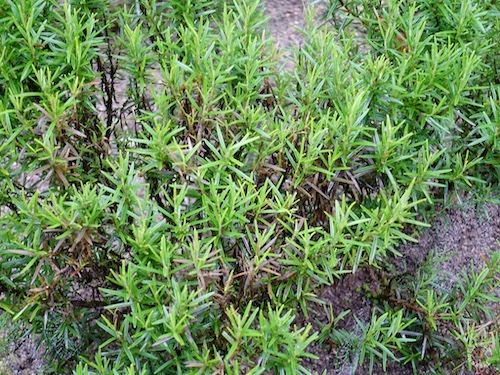
Rosemary is known and loved by its wonderfully aromatic piney scent and needle-like foliage. It has been cherished by cooks and apothecaries for centuries. Rosemary has been a cultivated herb for so long that natural hybrids have formed to give us different types for different situations. I think this is “Gorizia” Rosemary, which grows to about 30 inches and has stout, large, flat leaves. It is a member of the family Lamiaceae and is native to the Mediterranean region, though it has naturalized in many places throughout the world. It is one of the most common aromatic wild plants of the Mediterranean landscape, especially in rocky limestone hillsides adjoining the seaside. The name “rosemary” derives from the Latin for “dew” (ros) and “sea” (marinus), or “dew of the sea”. It was introduced to the New World by early immigrants, but in the northern regions they must protected in the winter months. Rosemary originated in the Mediterranean and is steeped in legend, said to live exactly 33 years – the length of Christ’s life, and then die. Rosemary has a historical association with the Virgin Mary. The flowers received their color light blue color when she placed her shawl over a rosemary bush after she washed it. The rosemary herb contains an essential oil which acts as a natural mosquito repellent.
Paico
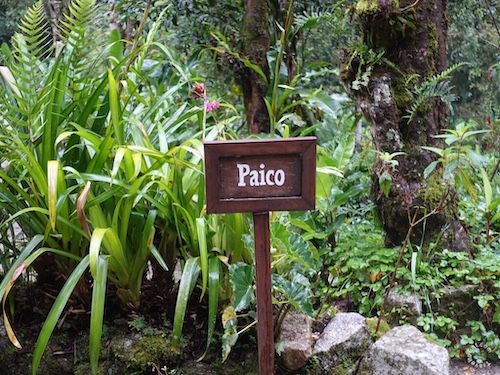
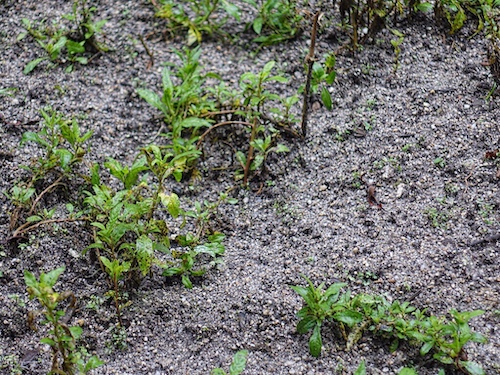
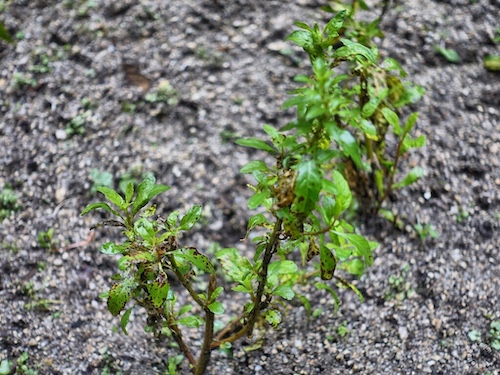
Paico (Dysphania ambrosioides), formerly Chenopodium ambrosioides, known as wormseed, Jesuit’s tea, Mexican-tea, paico, epazote, or herba sancti Mariæ, is an annual or short-lived perennial herb native to Central America, South America, and southern Mexico. The common Spanish name, epazote (sometimes spelled and pronounced ipasote or ypasote), is derived from Nahuatl: epazōtl meaning skunk sweat. D. ambrosioides is used as a leaf vegetable, herb, and herbal tea for its pungent flavor. Raw, it has a resinous, medicinal pungency, similar to oregano, anise, fennel, or even tarragon, but stronger. The fragrance of Dysphania ambrosioides is strong but difficult to describe. A common analogy is to turpentine or creosote. It has also been compared to citrus, savory, and mint. This strong, musky herb is usually used in Mexican cooking to flavor beans, and is said to make them less “gassy.” As a chenopodium it is a relative of the quinoa that is so popular today. While young leaves of the quinoa are often eaten as a green, they do not have the intense flavor of the condiment which led the botanists to relate it to ambrosia.
Oragano
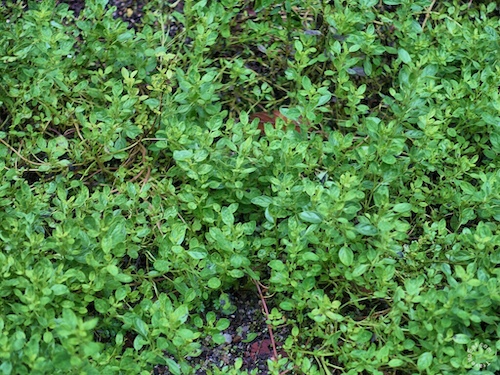
There are two popular varieties of oregano that are widely used in cooking. The two types: the Mexican and European (Greek) oregano. Both oregano varieties are similar, but different with distinctive aromas. Mexican oregano (Lippia graveolens) is not in the mint family, but in the closely related vervain family (Verbenaceae), that includes the lemon verbena (Aloysia citrodora). It is a highly studied herb that is said to be of some medical use and is common in curandera (female shamanic practices) in Mexico and the Southwestern United States. The flavor of Mexican oregano has a stronger savory component instead of the piney hint of rosemary flavor in oregano, and its citrus accent might be more aromatic than in oregano. A native plant to Mexico but its also grown throughout Central and South America. Mediterranean Oregano (Origanum vulgare), is a member of the mint family, it has a savory, milder, and peppery flavor. It grows throughout Greece, Italy, Spain, Turkey and Morocco. It is widely used in the Greek and Italian cuisines. In this garden, it appears that they chose to feature Mediterranean Oregano (Origanum vulgare).
Tea House
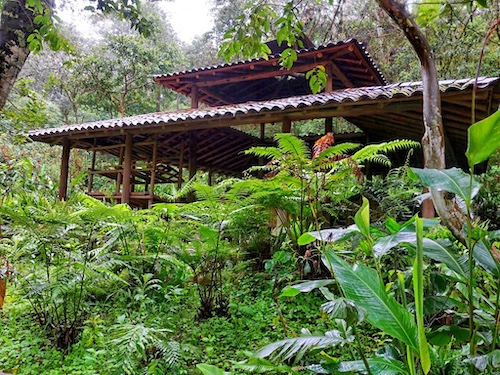
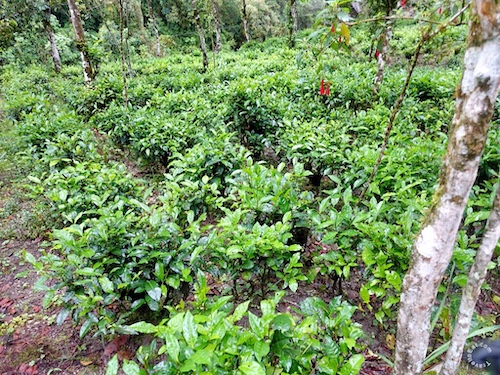
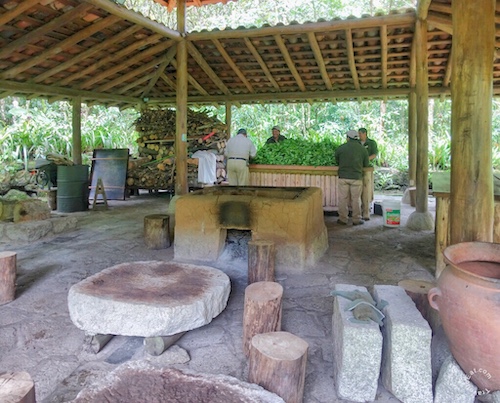
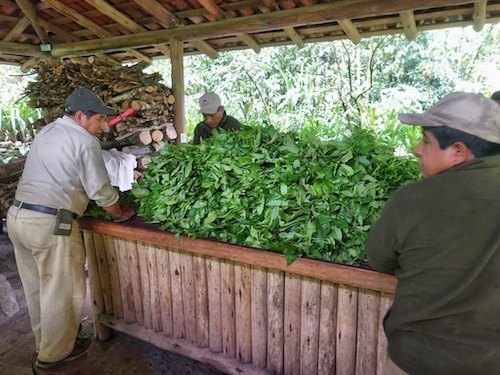
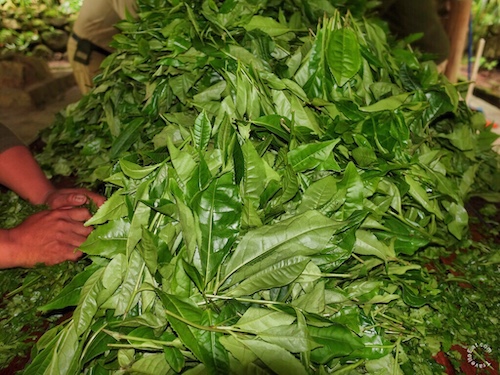
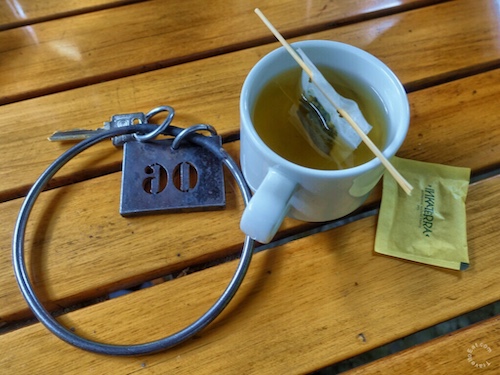
Green Tea (Camellia sinensis) is a species of evergreen shrub or small tree whose leaves and leaf buds are used to produce tea. It is of the genus Camellia (“tea flower”) of flowering plants in the family Theaceae. At the Inkaterra Machu Picchu Pueblo Hotel, they have a large area for the cultivation of Green Tea, a holdover from the previous tea plantation. I happened upon the workers, one early morning, crushing the green tea for use in the hotel.
I hope you enjoyed the post, please leave a comment or correction.
[mappress mapid=”152″]
References:
Arrowleaf Elephant Ear: http://davesgarden.com/guides/pf/go/2218/
Vegetalismo: http://www.santuariohealing.com/vegetalismo/
Lemongrass vs Lemonbalm: http://www.thewhistlingkettle.com/blog/lemongrass-vs-lemon-balm/
Comparative Study of Lemongrass: http://www.journals.istanbul.edu.tr/iujfp/article/viewFile/5000168871/5000152614
Cedroncillo: http://leahinperu.tumblr.com/post/79478353986/cedroncillo-a-medicinal-herb-found-in-the-andes
Hiebra Buena: http://gospain.about.com/od/fooddrink/f/hierbabuena_menta.htm
Andean Silver-Leaf Sage: http://davesgarden.com/guides/pf/go/1836/#b
Lepechinia: http://www.botany.wisc.edu/sytsma/pdf/DrewSytsma2013.pdf
Rosemary: http://pantrygardenherbs.com/shop-for-organic-herbs/rosemary-varieties/
Peruvian Herbs: http://raeperu.org.pe/wp-content/uploads/2015/06/Mates-y-tradici%C3%B3n.pdf
Herbs in Cuzco: http://www.cuzcoeats.com/2011/06/inca-condiments/
Medicinal Peruvian Plants: http://link.springer.com/content/pdf/10.1186/1746-4269-6-30.pdf
Dysphania ambrosioides: http://davesgarden.com/guides/pf/go/51558/#b
Oregano in Peru: https://peruvianspoon.wordpress.com/2014/08/14/oregano-key-ingredient-in-peruvian-cooking/
Ayahuasca: http://www.singingtotheplants.com/what-is-ayahuasca/

